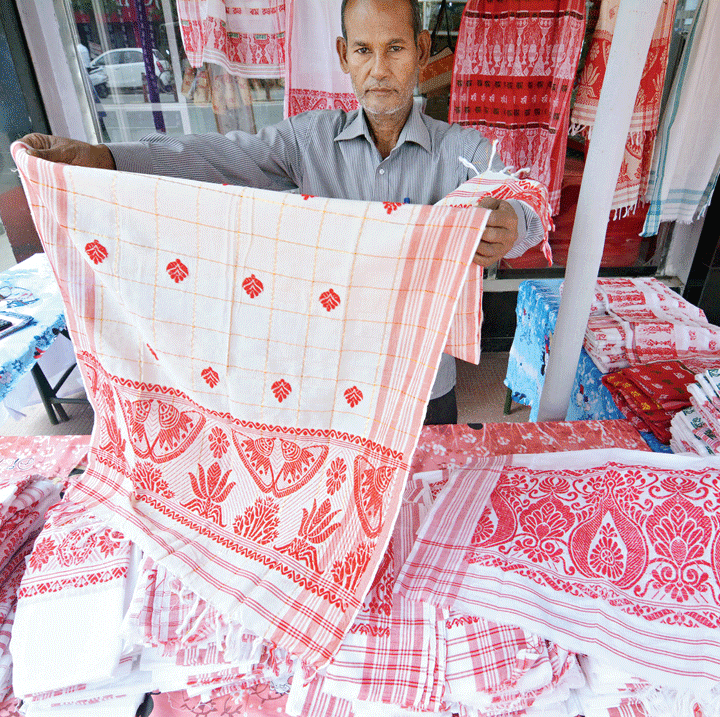The gamosa and chokuwa rice have won their case for identity.
The two have finally been approved for the geographical indications (GI) tag.
The 124th Geographical Indications Journal has advertised the two as having the GI tag. Geographical indication is used to identify agricultural, natural, or manufactured goods originating in the said area and should have a special quality or characteristics unique to the geographical indication.
The application for gamosa was made by Institute of Handicraft Development, Golaghat, while the application for chokuwa rice was made by Seuj Satirth of Sivasagar.
“The gamosa is a traditional textile and a symbol of Assamese culture,” the GI journal said. There are different types of gamosa like uka, phulam, bihuwan, tiyoni, pani, aanakota, telosh, dora boronor or jur and xadharon gamosa.
The word gamosa originated from the Sanskrit word, gatro marjoni, meaning fabric used to wipe the body after taking a bath.
“The chokuwa rice of Assam is a unique gift of nature, not known in any other part of the world. It is a
special class of semi-glutinous winter rice (Sali rice in vernacular) of Assam, in cultivation from time immemorial,” the journal said.
The rice has significance in social and religious ceremonies. However, it is not used for regular consumption. “Highly-valued delicacies are prepared from chokuwa rice. The parboiled chokuwa rice becomes soft by just soaking in ordinary water. Its preparations are very popular in community feasts and festivals. Soft rice, which is locally known as komal chaul, is prepared from this by soaking the rice in either cold or hot water,” it says.
Niranjan Kalita, a weaver and entrepreneur from Sualkuchi, said, “Geographical indication for the gamosa has been a long-cherished dream. This will relieve us from the gamosa reproduced by using power looms by outside industries.”
Kalita said the GI tag will enable weavers and entrepreneurs to export a niche brand of gamosa maintaining quality and prices.
Jnanendra Kr Kalita, the deputy general manager, Pragjyotika Assam Emporium, here said GI indication would boost their confidence to expand the gamosa as a brand. “However, organising the weavers here is still a challenge. Production of gamosa is seasonal. Weavers make gamosas only after harvesting their corps. Fulfilling the market requirement is a problem,” he said.
Additional reporting by Debananda Medak











